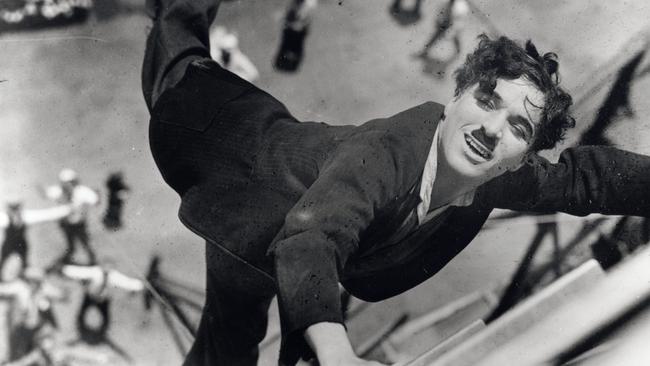
In much the same way, Hitler’s distinctive moustache belonged to a character that preceded him – Charlie Chaplin’s Tramp. Before Mein Kampf, Charlie was far more famous than Hitler – indeed, he was the most famous man on earth, his silent-movie clowning familiar to millions, perhaps billions. And just as he appropriated the swastika, Hitler appropriated the Tramp’s silly moustache. They became doppelgangers, something that Chaplin used to devastating effect in his 1940 masterpiece The Great Dictator, in which Tramp and tyrant get somewhat confused. Chaplin, through satire, tried to warn the world of Hitler’s menace. It’s hard to see why Hitler didn’t shave his moustache off.
The two men were born within days of each other, Charlie in London, Adolf in Austria. (So much for astrology). One would spend his life making the world laugh, the other slaughtering millions and mounting a genocidal attack on Europe’s Jews and other minorities. Haters of Chaplin – including J. Edgar Hoover – saw the great comic actor as a Jewish commie. Chaplin wasn’t Jewish, but never denied it. He was proud to be a de facto Jew: another reason to admire the genius who made The Great Dictator, The Gold Rush, Modern Times, City Lights and The Kid. Chaplin’s flaws gave his enemies ammunition that Hoover could use to run him out of town. But when it came to fighting fascism, he was a one-man International Brigade, even at the risk of his fortune and his film career. Chaplin made The Great Dictator when the US was opposed to joining the war against Germany. The movie, ending with a passionate denunciation of Hitler, won Chaplin more enemies than accolades, particularly in his adopted country. His film might well have bankrupted him – many US cinemas refused to screen it – but he was not morally bankrupt.
To Hoover’s great delight, Chaplin would be evicted from the US, only to return in 1972, towards the end of his life, to receive an Honorary Oscar – belated thanks from the industry he had done so much to create.
Chaplin was born into abject poverty, and had a childhood only Dickens could describe. His mother became insane and was in and out of lunatic asylums. Finally, Charlie and his half-brother Sydney brought her to America, where she spent the last years of her life.
After his death in 1977, Sir Charles Spencer Chaplin was placed in a family tomb by his last wife Oona, daughter of the great playwright Eugene O’Neill, in the garden of their Swiss home. And in a final piece of slapstick comedy, Chaplin’s body was stolen – for ransom.
A personal postscript. My grandmother appeared with Chaplin on London music hall stages, when she had a troupe of performing seals. Yes, showbiz runs in the family.




Given its 20th-century association with anti-Semitism, I’ve long seen the swastika as the cross in jackboots – a symbol of cruelty, death and destruction. Yet for millennia before its appropriation by the Nazis, the swastika symbolised spirituality. In Hinduism, Buddhism and various other faiths it stood for truth and the transcendent. Now, in America and even in Australia, the swastika is once more on the march via neo-Nazism.